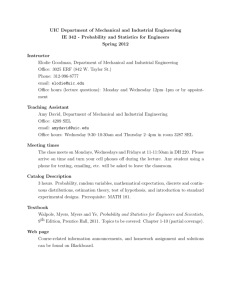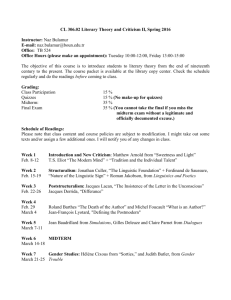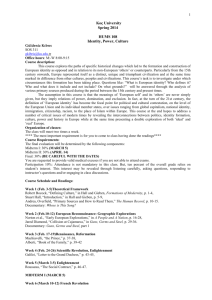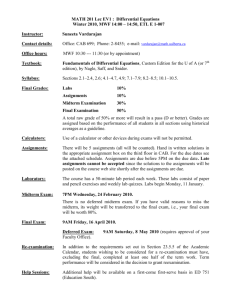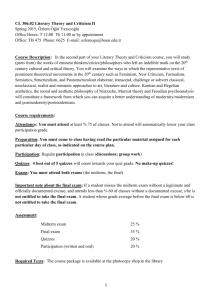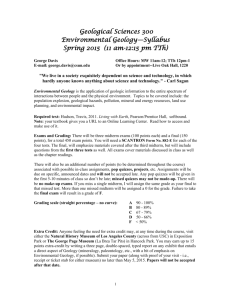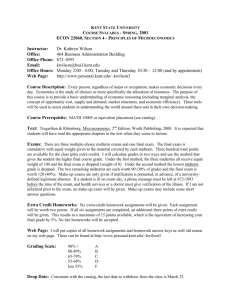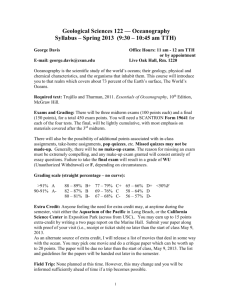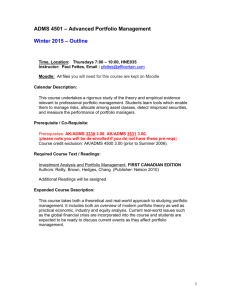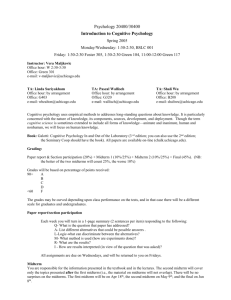CALCULUS III (SPRING 2013) 1. Nuts and bolts Course Schedule
advertisement
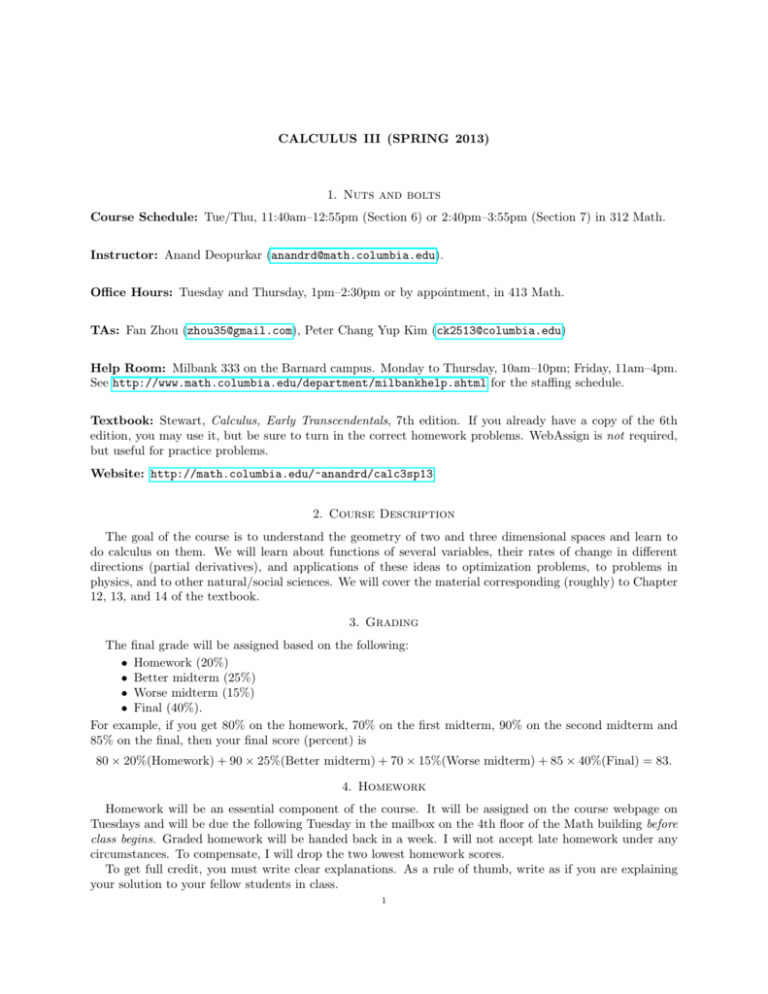
CALCULUS III (SPRING 2013) 1. Nuts and bolts Course Schedule: Tue/Thu, 11:40am–12:55pm (Section 6) or 2:40pm–3:55pm (Section 7) in 312 Math. Instructor: Anand Deopurkar (anandrd@math.columbia.edu). Office Hours: Tuesday and Thursday, 1pm–2:30pm or by appointment, in 413 Math. TAs: Fan Zhou (zhou35@gmail.com), Peter Chang Yup Kim (ck2513@columbia.edu) Help Room: Milbank 333 on the Barnard campus. Monday to Thursday, 10am–10pm; Friday, 11am–4pm. See http://www.math.columbia.edu/department/milbankhelp.shtml for the staffing schedule. Textbook: Stewart, Calculus, Early Transcendentals, 7th edition. If you already have a copy of the 6th edition, you may use it, but be sure to turn in the correct homework problems. WebAssign is not required, but useful for practice problems. Website: http://math.columbia.edu/~anandrd/calc3sp13 2. Course Description The goal of the course is to understand the geometry of two and three dimensional spaces and learn to do calculus on them. We will learn about functions of several variables, their rates of change in different directions (partial derivatives), and applications of these ideas to optimization problems, to problems in physics, and to other natural/social sciences. We will cover the material corresponding (roughly) to Chapter 12, 13, and 14 of the textbook. 3. Grading The final grade will be assigned based on the following: • Homework (20%) • Better midterm (25%) • Worse midterm (15%) • Final (40%). For example, if you get 80% on the homework, 70% on the first midterm, 90% on the second midterm and 85% on the final, then your final score (percent) is 80 × 20%(Homework) + 90 × 25%(Better midterm) + 70 × 15%(Worse midterm) + 85 × 40%(Final) = 83. 4. Homework Homework will be an essential component of the course. It will be assigned on the course webpage on Tuesdays and will be due the following Tuesday in the mailbox on the 4th floor of the Math building before class begins. Graded homework will be handed back in a week. I will not accept late homework under any circumstances. To compensate, I will drop the two lowest homework scores. To get full credit, you must write clear explanations. As a rule of thumb, write as if you are explaining your solution to your fellow students in class. 1 Collaboration: You are allowed to work in groups on the homework problems, but you should write-up the solutions by yourself. Also, you must write the names of your collaborators at the top of your write-up. This will have no bearing on your grade; it is a matter of fairness and academic honesty. 5. Exams The two midterms will be held during class time. There will be no make-ups. There will be no excuses for missing the midterms, except a health or family emergency of considerable gravity, justified by a letter from the dean. In this case, the score of the other midterm will be substituted for the score of the missed midterm. Calculators will neither be necessary nor allowed on the midterms and the final. 6. Syllabus The following is the day-by-day plan of how the course will proceed, subject to small changes depending on the mood of the class. You will get much more out of the lecture if you read the relevant section of the book beforehand. Date Topic Reading Jan 22 Introduction, coordinate systems 12.1 Jan 24 Vectors, dot product 12.2, 12.3 Jan 29 Complex numbers Appendix H Jan 31 Complex numbers (contirued) Appendix H Feb 5 Cross product 12.4 Feb 7 Equations of lines 12.5 Feb 12 Equations of planes 12.5 Feb 14 Equations of quadric surfaces 12.6 Feb 19 Review Feb 21 Midterm I Feb 26 Vector valued functions 13.1 Feb 28 Parametric space curves 13.1 Mar 5 Calculus of vector valued functions 13.2 Last day to drop the course for most schools. Mar 7 Arc length and curvature 13.3 Mar 12 Velocity and acceleration 13.4 Mar 14 Applications Mar 18–22 Spring break Mar 26 Review Mar 28 Midterm II Apr 2 Functions of several variables 14.1 Apr 4 Limits and continuity 14.2 Apr 9 Partial derivatives 14.3 Apr 11 Tangent planes and linear approximations 14.4 Apr 16 The chain rule 14.5 Apr 18 Directional derivatives and the gradient 14.6 Apr 23 Maxima and minima 14.7 Apr 25 Optimization 14.7 Apr 30 Constrained optimization - Lagrange multipliers 14.8 May 2 Review 2
